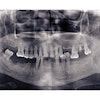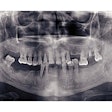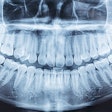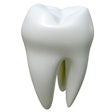All Midmark products manufactured with composite wood components are now in compliance with the California Air Resource Board (CARB) Phase 2 airborne toxic control measure, designed to control formaldehyde emissions from composite wood products.
Midmark received formal recognition of Phase 2 compliancy on May 16, 2011, well in advance of the December 31, 2011, compliance date for goods fabricated with wood composite parts, the company noted.
In 1992, the state of California deemed formaldehyde as a toxic air contaminant, claiming that there is no safe level of exposure for humans. Then in 2004, the International Agency for Research on Cancer (IARC) classified formaldehyde as "carcinogenic to humans" based on the increased risk of nasopharyngeal cancer.
It was then that a formal rulemaking process was conducted to address formaldehyde exposure from composite wood products, resulting in the April 2007 airborne toxic control measure (ATCM) to reduce formaldehyde emissions. The ATCM applies to composite wood products, including hardwood plywood, particleboard, medium density fiberboard, thin medium density fiberboard, and other furniture and finished products containing composite wood parts.
In April 2008, the ATCM to reduce formaldehyde emissions was approved by the Office of Administrative Law and was filed with the California secretary of state to be codified into Title 17 of the California Code of Regulations.
Midmark currently uses particleboard and medium density fiberboard in the fabrication of its cabinetry products. Since receiving its Phase 1 compliancy in January of 2009, Midmark has cut formaldehyde emissions from its products in half to comply with CARB Phase 2 standards.
In addition to reducing formaldehyde emissions, the Midmark casework line and Integra operatory casework offering both use no added urea formaldehyde (NAUF) substrates.

















